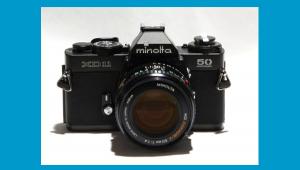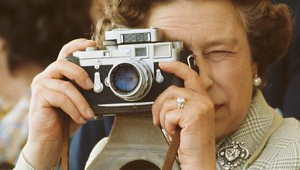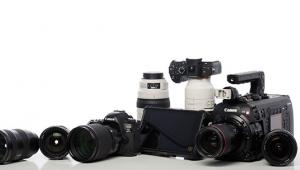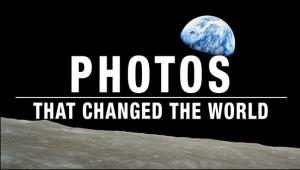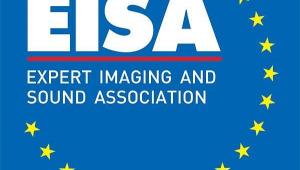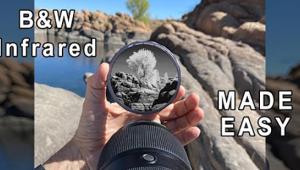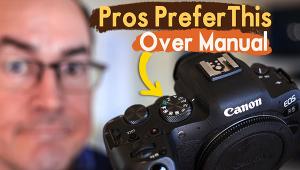Tamron’s 17-50mm F/2.8 Lens
 |
|
|
But terminology aside, any constant aperture lens is always my first choice
for a zoom, as exposure will not shift in the middle of a shot. With some variable
aperture lenses a handheld image can be prone to camera shake when you zoom
in. This is not so bad in the f/2.8-3.5 slide that is fairly common, but becomes
a true pain in the less expensive f/3.5-5.6 types, where you might as well permanently
attach a tripod to get a steady shot with the lens.
One of the real benefits of this new lens is the fact that you can maintain
the same close-focusing distance throughout the range, so you can get in tight
with the wide and then try out different framings without having to move back.
This advantage allows you to set a tripod and then decide about composition,
using the IF (Internal Focusing) mechanism to get within 10.6" at all
times. It isn't a 1:1 reproduction ratio, but 1:4.5, which, in digital
(APS-C) terms is really like 1:3 equivalent, close enough in my book for all
but those who would require a fixed focal length 1:1 macro-dedicated lens.
Tamron was one of the first companies to bring forth "digitally-optimized"
lenses, and for a while none of us could figure just what that meant. There
are a few items that do seem to make a difference--how sensors gather light,
the greater resolution capability of digital, and the way ghosting and flare
plagues image crispness. This lens addresses all three matters.
 |
|
|
First off, the lens has been designed to constrict the angle of incidence
of light striking the sensor, which plays to the fact that photo sites are more
efficient as light striking them becomes more perpendicular. Too acute an angle
can cause problems, something that plagued early wides in the digital realm,
and why we didn't have many wide angle lenses when digital SLRs first
came out the gate. (In truth, though, the micro lenses placed by manufacturers
over their sensors to direct light in a more efficient manor can have as much
influence over optical quality as how the lens does the same, but I guess having
a double backup can't hurt.)
The lens has been optimized with Extra Refractive Index glass (the XR designation)
and two hybrid aspherical elements, plus a low dispersion glass element to compensate
for chromatic aberrations. And multi-coating of a number of internal elements
cuts down ghosting and flare as well, chief enemies of snappy images. Plus,
included with the lens is a flower-shaped hood, a good item to keep attached
to the lens to cut down on light striking across the surface of the lens.
 |
|
|
I worked with the Tamron SP AF17-50mm F/2.8 XR Di LD Aspherical (IF) lens
(that's Tamron's official name for it) on a Canon EOS 30D in close
focusing, tele, and wide setups, and found it a good match for just about any
lighting and subject scenarios. The only nit to pick is the lack of a manual
focus override when in AF mode; indeed, trying to tweak AF manually might cause
some damage. With an MSRP of $763 the lens is considerably less expensive than
others in its class, and worth the investment as that one moderate wide to tele
constant aperture zoom that's always a handy item in any photo day kit
bag.
For more information, contact Tamron USA, Inc., 10 Austin Blvd., Commack, NY
11725; (631) 858-8400; www.tamron.com.
- Log in or register to post comments


